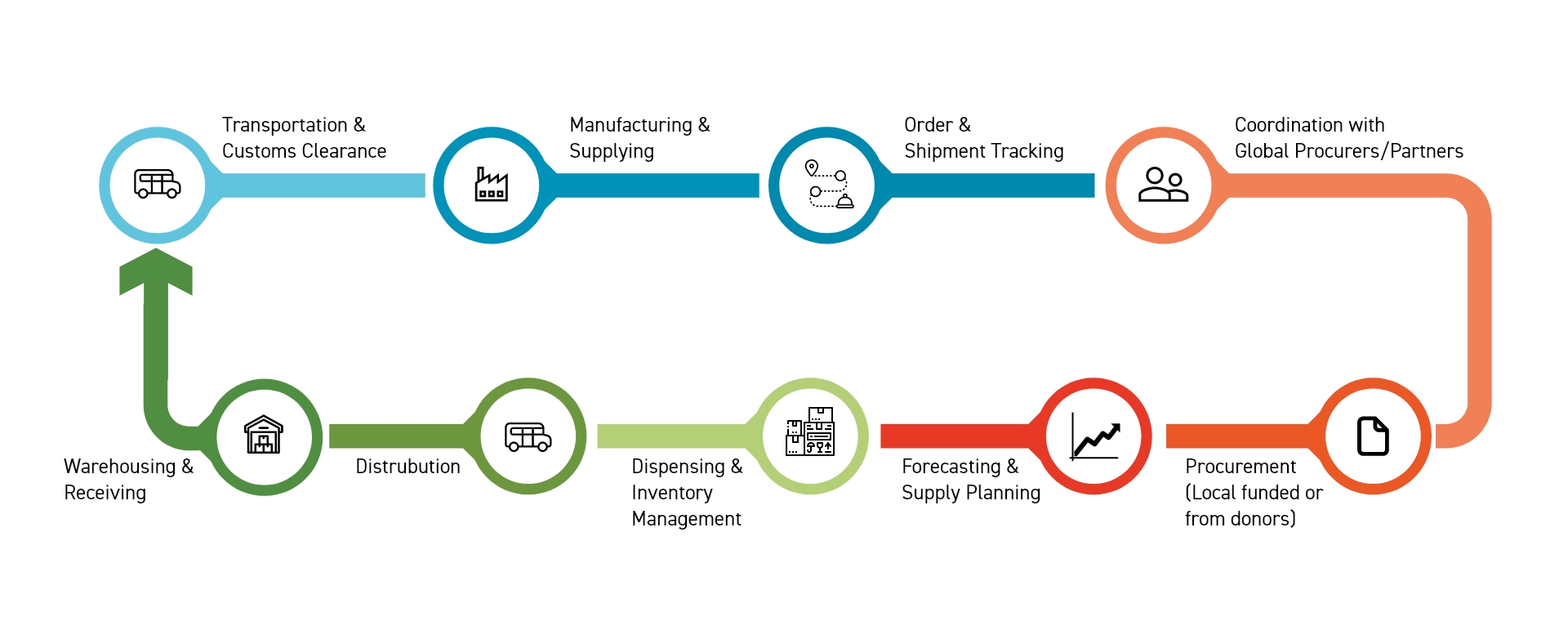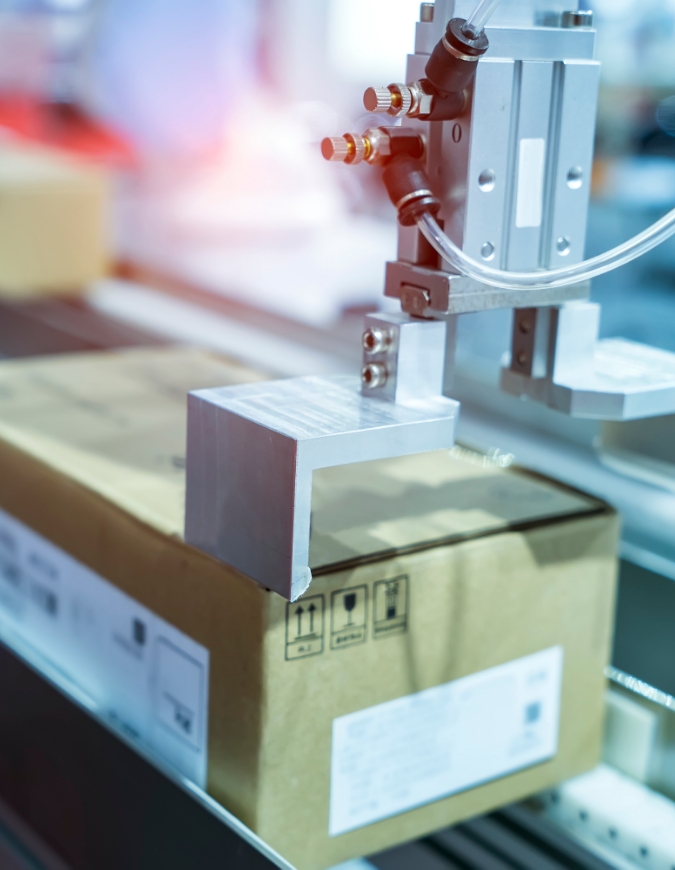Related Articles
- Bringing the seamlessness in supply chains with IoT
- The Step-By-Step Guide to Move Apache Kafka to Amazon MSK
- Discover how AI can influence personalized medicine to magnify healthcare and life sciences
- The many use cases of Large Language Models (LLMs) in healthcare
- Experience How Edge Computing Is Paving the Path for the Future of Computing and Connectivity
- Making IoT data matter
- What Is AWS Well-Architected Review and Why Do You Need It?
It wasn't long ago that companies across industries and countries saw a massive disruption to their supply chains. Raw materials didn't get delivered on time. Manufacturing processes got delayed. Order deliveries took a hit. The situation is still ongoing and is expected to continue next year too.
One of the biggest hurdles that contributed to these disruptions was the lack of visibility—over devices, supply chain cycles, processes, and the to-market journey. This is also what Internet of Things (IoT) solves exceptionally well for supply chains.
With devices, applications, and processes being tracked with real-time updates, IoT-enabled devices, sensors, data, and environments make it easy to see incidents throughout the supply chain lifecycle—from procurement and inventory management to warehousing, distribution, and transportation. Above all, bringing IoT to supply chains also adds layers of AI and Machine Learning (ML) into the process, making it easy to see what is going wrong, where to course-correct almost immediately, and see where upcoming disruptions may lie to avoid unplanned downtimes with predictive analytics.
And it's because of use cases and benefits like these that reports peg the IoT devices to almost triple from 8.74 billion in 2020 to over 25.4 billion IoT devices in 2030.
But while one side of the coin is the ease of operations and visibility that comes with leveraging IoT devices and technologies, the other side is its complicated implementation, which needs immense technical expertise and a clear strategy.
So, if your business has decided to go ahead with IoT, the first question you need to answer is – what is the strategy? Then comes what IoT solutions and technologies to leverage and how to create a seamless supply chain?
This blog will answer these questions to simplify your supply chain operations.
Why do businesses need IoT for their supply chains
Before we dive in, let's see a little more about the use cases of IoT technologies and how they streamline supply chains.
The most significant reason IoT technologies are being focused on for supply chains is their transparency, from monitoring systems to tracking the entire lifecycle of products. They remove the uncertainty of manual processes and labor to give a real-time view of where things stand. The automation they enable helps monitor the machines' efficiency and precision and to allow real-time alerts for faster failsafe solutions. They also bring a massive difference to the way companies collate, arrange, and use data. Since IoT devices gather data, it brings accuracy to predictions and gives room to see upcoming issues, making critical processes like demand forecasting more accurate.
Use cases of IoT in the Supply Chain Lifecycle


Simplifying the supply chain- One step at a time
A critical part of kickstarting the IoT journey is a customized, clear strategy. Every business is different, and so are the goals of an IoT transformation. Companies also need to consider existing solutions, the extent of integrations they want to try, and the degree of reliance on IoT.
Creating a strategy that answers these questions needs technical expertise that considers what fits their current needs while keeping an eye on future goals. And this balance needs to go the end-to-end, long haul, – including processes like designing intelligent IoT products, firmware engineering, implementing the right IoT technology stack, and analytics for the best results.
How do they start? Let's take a look.
Asset tracking and inventory management
One indisputable and evergreen fact about supply chains is that their complexity only increases. It's understandable too. As businesses expand their geographic footprint, scale up their business, handle more data, and implement more IT layers, transparency drops, and processes get complex.
This is where businesses must rely upon IoT sensors and devices to transmit data with the frequency they need. IoT-enabled asset tracking inventory management can improve the effectiveness of their equipment, optimize their logistics and warehouses, establish a reliable tracing method, and cut out inefficiencies while reducing costs.
A good example is what Amazon warehouses and stores established. With sensors that enable contactless shopping and robotic warehouse management, they made their tracking process faster, minimized errors, and relayed real-time data to give customers an unparalleled omnichannel experience—something that has been critical for their success.
The most effective way to make such a seamless experience reality is by having the right IoT products. That's what we gun for with our IoT Product Design and Firmware Engineering services—crafting the AI-enabled IoT products that minimize complexity. Handling everything from integrations to software, we make sure the devices embed intelligence by blending electrical engineering and programming perfectly.

Operational visibility and intelligence
Once the right devices are in place, businesses need to use the data to unlock value. They need to track performance, see any anomalies, and address issues quickly to minimize disruptions. And this sort of proactive approach needs the right data pipelines, analytics, and integrations to create a hyperconnected infrastructure.
Where do businesses start? By handling everything from the data organization to embedding IoT into the entire IT stack. Our IoT Data Pipeline services help with the first step by simplifying ingestion, integration, processing, and storage of data, blending AI and machine learning with it. We make it easier for businesses to move and analyze data better for faster decisions.
The next thing we focus on is data. With IoT Data Analytics, we don't just add AI and machine learning layers to derive value from the data and conduct predictive processes or maintenance and insights. These become critical to see where a business should focus, performance and efficiency to be expected, and any issues brewing. Businesses can create strategies to avoid sudden disruptions or downtimes, critical for a well-oiled supply chain.
The most crucial part of IoT is having the right stack and integrations in place. With IoT Development Services, we help businesses create a hyperconnected infrastructure with the right integrations for seamless supply chain processes, more operational efficiency, and increased visibility. We seamlessly integrate applications, devices, and clouds to create a perfect stack that keeps supply chains going with minimal disruption.
In our world, where customer experience matters beyond everything, the days when customers would expect or accept delays are long gone. Today, it goes beyond that to directly impact a relevance and sales of a business. Uninterrupted, seamless supply chains are necessary in today's world, and with IoT technologies and solutions, companies can make this a reality.
Wondering where to start? We can help.
Learn more Source: https://www.statista.com/statistics/1183457/iot-connected-devices-worldwide/#:~:text=Number%20of%20IoT%20connected%20devices%20worldwide%202019-2030&text=The%20number%20of%20Internet%20of,China%20with%203.17%20billion%20devices